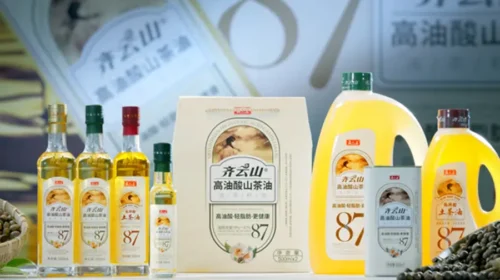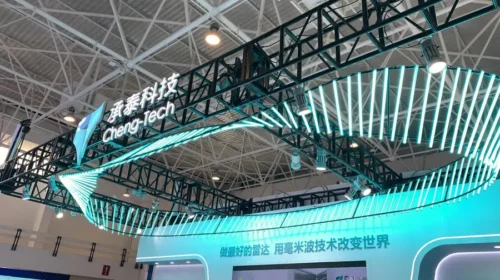361 Degrees sprints ahead of rivals in earnings race

The Chinese sportswear brand has outpaced other major players in half-year earnings growth, benefiting from competitive pricing as consumers hunt for bargains and prioritize spending on children
Key Takeaways:
- 361 Degrees posted a 12% rise in profits and more than doubled its dividend payout for the first half of the year, beating market expectations
- Price competition is expected to persist into the second half of the year as major brands step up a battle for market share
By Fai Pui
China has been celebrating a summer of sport after landing at the top of the Olympic gold medal table in Paris alongside the United States.
The performance at the August Games ranked as China’s best outing to date at an overseas Olympics, generating a feelgood effect that is likely to linger on in sales of sporting goods and leisurewear.
Investors in sportswear brand 361 Degrees International Ltd. (1361.HK) had an added reason to celebrate, as the company beat market expectations with its half-year earnings report earlier this month and announced a bumper dividend.
The sporting goods company is much smaller in scale than dominant brands such as Li Ning (2331.HK), Anta (2020.HK) and Xtep (1368.HK), but competitive pricing has made it a force to be reckoned with in China’s third- and fourth-tier cities. The firm’s earnings momentum in the first half of the year outpaced the industry giants, boosted by growing sales of children’s sportswear and a consumption shift towards cheaper goods in uncertain economic times.
Revenues in the first six months of the year jumped just over 19% to 5.14 billion yuan ($720 million), according to the earnings release, while net profit rose around 12% to 790 million yuan. The company announced a dividend of HK$0.17, more than 150% higher than the first-half payout last year and equivalent to around 40% of net income.
361 Degrees shapes up well against the industry heavyweights in the interim earnings stakes. Net profits at longtime market leader Li Ning fell 8% in the first half on meager revenue growth of 2.3%. The rise in Anta’s sales languished in the single digits, while Fila’s sales could not match the brisk pace at 361 Degrees.
The numbers from 361 Degrees met with a bullish reaction from stock analysts, generating a host of “buy” ratings for the stock. CMB International said the momentum should carry through to the second half, leaving the company looking undervalued with a price-to-earnings (P/E) ratio of only 6 times and dividend yield of 7%. It set a target price of H$5.15, around 40% above current levels.
Shenwan Hongyuan Securities also rated the stock a “buy”, citing factors including competitive prices, healthy inventory turnover, ample cash flow and effective use of business channels that enable it to outgrow industry peers.
Among goods for adults, footwear sales grew 20% to about 2.28 billion yuan and apparel sales rose nearly 16% to 1.58 billion yuan in the first half of the year. Meanwhile, revenue from children’s clothing grew around 24% to 1.13 billion yuan, taking the share of overall revenue to 22% from 21.1%, lifted by a 26% rise in sales volume for apparel and footwear products. The figures on sales of children’s products followed an operational update in July that had indicated the segment’s fast growth could be moderating in the second quarter.
But analysts said 361 Degrees was picking up custom from brands at the higher end of the market, such as Li Ning, Anta and Xtep, as cash-strapped households reined in their spending and sought out cheaper alternatives, a trend dubbed “consumption downgrade”.
Curtis Yeung, strategist at UOB Kay Hian (Hong Kong), said consumers were attracted to the competitive prices at 361 Degrees, where some shoes were selling for less than 100 yuan a pair.
The company has been actively cultivating the market in China’s smaller cities, hoping to make its mark as an affordable but trendy option. As of June 30, three quarters of the company’s 5,740 branded stores were in third-tier cities or below, while only around 5% of outlets were in first-tier cities and 19% in second-tier locations. The company said it was also rolling out more of its larger, new-look stores in smaller cities to attract customers with fashionable designs.
Betting on kids
The company’s big footprint outside China’s main cities has offered a business advantage that bigger rivals have not been able to match for now.
China’s slowing economy has had less of an impact in the smaller, regional cities, which are still in the process of urbanizing, said UOB Kay Hian’s Yeung. In those locations, a big chunk of sports- and footwear sales takes place in 361 Degrees stores, with their affordable prices.
Consumers tend to prefer to try on sports shoes at a physical store, giving the company an advantage with its network of local outlets, which can be operated with low rental and labor costs. “If you are looking for clothes, you can buy the right size online and it can fit perfectly. But with shoes, you have to try them on as the sizing may vary depending on the type of shoe,” Yeung said.
The company has been targeting the kids’ market since 2009, finding a powerful and resilient growth engine. When money is tight, parents will prioritize spending on their children, making the market better able to withstand economic downturns than some other parts of the retail sector.
According to Euromonitor data, China’s market for children’s clothing reached 256.36 billion yuan in 2021, an increase of 15.6% from the previous year, and is expected to grow to 459.7 billion yuan in 2027.
The dynamics of the children’s footwear market also favor the 361 Degrees business model, says Yeung. While adults can wear the same pair of shoes for several years, children quickly outgrow their footwear, prompting parents to favor less expensive brands for their kids.
China’s retail sector is showing stronger signs of recovery in the second half of the year. Retail sales of consumer goods increased 2.7% in July from a year earlier, growing 0.7 percentage point faster than in June and beating market expectations. Yeung predicted sportswear would grow at a faster rate than other retail segments, led by cost-effective domestic brands and spurred by enthusiasm over the Olympics.
However, profits could come under pressure. Aside from a price war, the sportwear industry appears to be gearing up for a marketing battle to protect or expand market share.
Yeung said Li Ning’s advertising expenses rose 20% in the first half from the year-earlier period, while 361 Degrees has vowed to raise its spending by 42%, as well as sponsoring major events and appointing an international brand ambassador. “So, a marketing war is a foregone conclusion for the second half of the year, which might hurt companies’ margins,” he predicted.
To subscribe to Bamboo Works free weekly newsletter, click here






